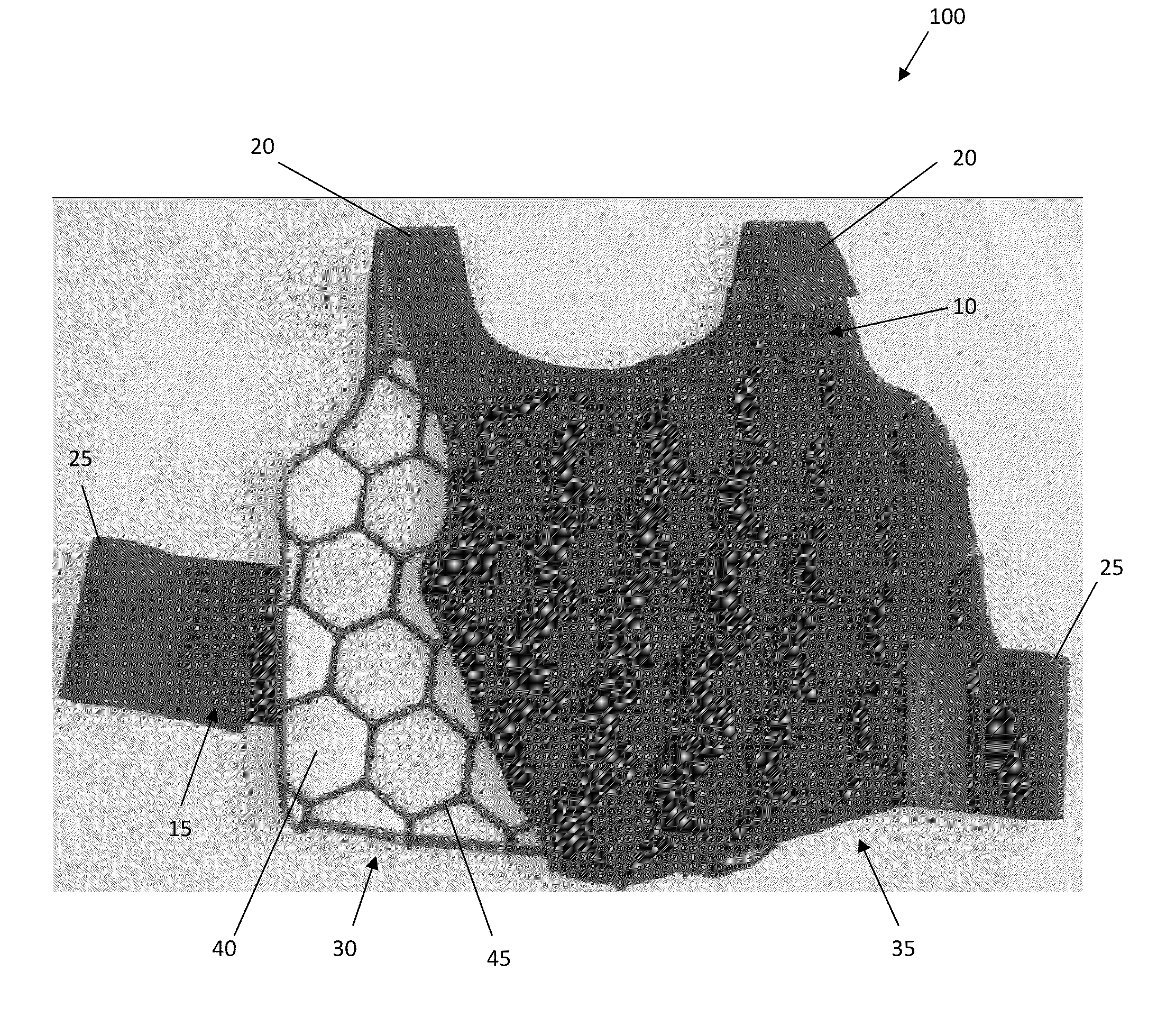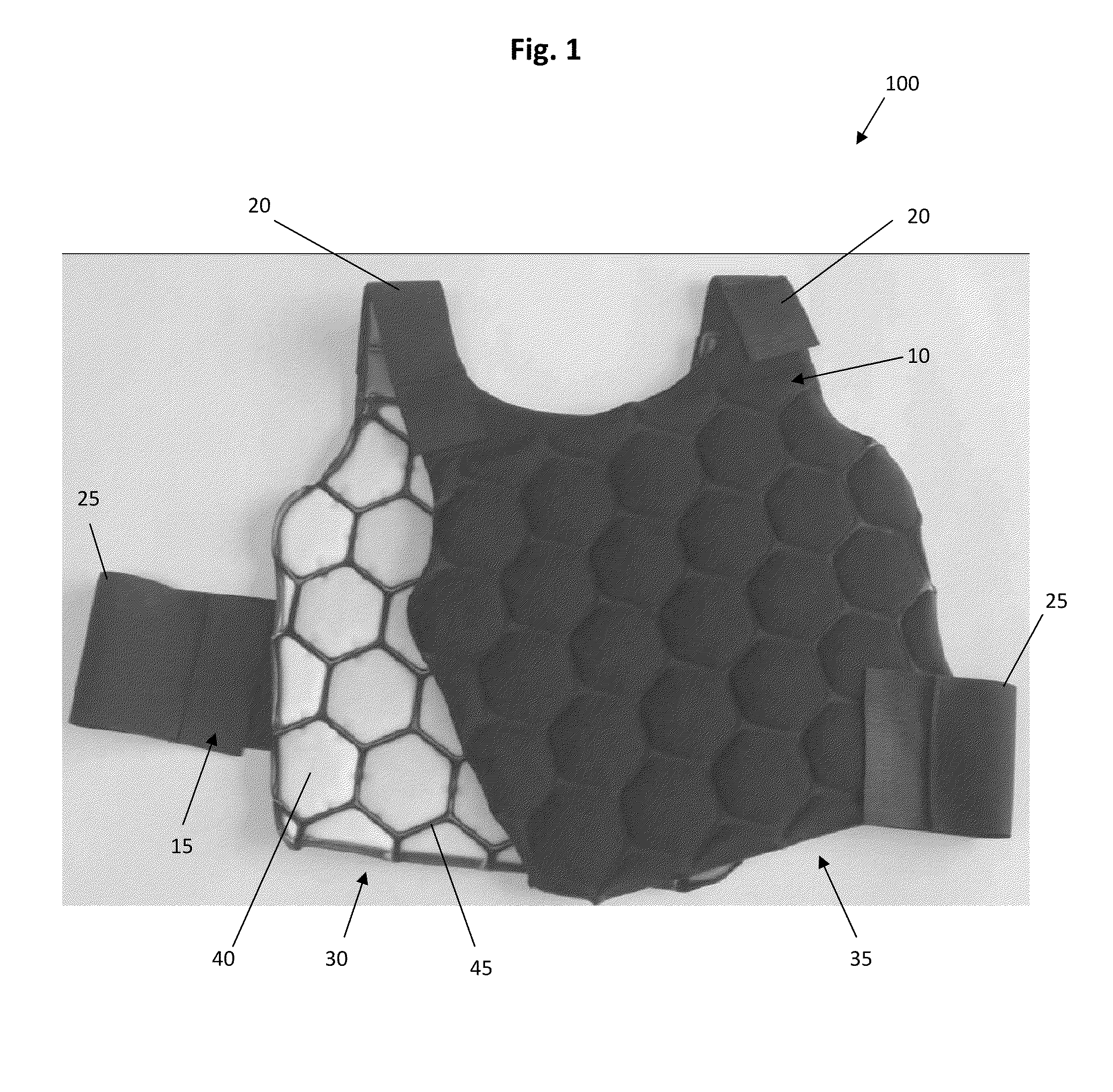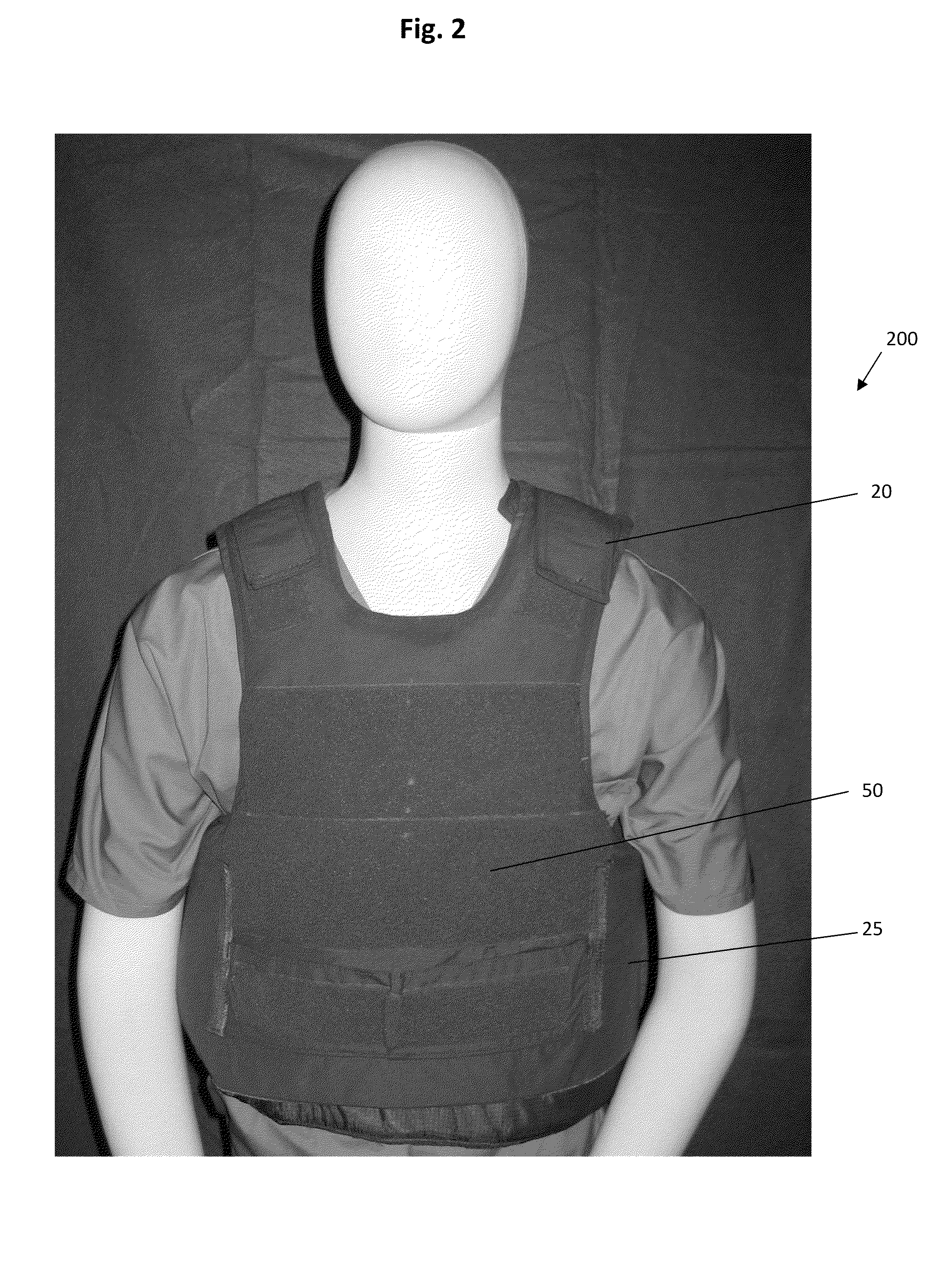Safety personnel, police / security, military and other hazardous duty personnel use different forms of protective garments / systems to mitigate both high and / or low force impacts from a wide range of potential threats and typically suffer the challenge of considerable heat build-up while wearing such
protective gear.
This process enhances wearer mobility but still creates a negative affect producing heat build-up experienced by the wearer.
Unfortunately, such armor is large, heavy, and often interferes with the wearer's mobility while also creating additional
heat load.
However, these deformations and vibrations cannot occur instantaneously.
A high-velocity collision (an impact) does not provide
sufficient time for these deformations and vibrations to occur.
Thus, the struck material behaves as if it were more brittle than it is, and the majority of the applied force goes into fracturing the material.
Ductile materials like steel tend to become more brittle at
high loading rates, and spalling may occur on the reverse side to the impact if penetration doesn't occur.
Since most materials are weaker in tension than compression, this is the zone where cracks tend to form and grow.
To the extent that the outer shell or layer is unable to deflect a blow in the area of the impact, the energy will be transferred to the underlying material in a more localized manner, resulting in a high force per unit of area that is likely to cause greater injury than if the force were more distributed.
This said, it should be recognized that materials capable of providing impact protection at certain speeds generally provide inadequate protection at other speeds.
For example, rigid or non-resilient materials may be effective at protecting the wearer at high impact speeds but are almost wholly ineffective at absorbing the
impact energy of
low speed impacts.
None of this, however, considers the integration of effective microclimate control into a
protective garment.
Heretofore, it has not been possible to integrate both state of the art force impact protection and state of the art microclimate control in a system or light garment that still affords necessary flexibility and
range of motion.
It is known that protective
layers may create significant additional heat for the wearer or object protected both because the ballistic protective
layers are good thermal insulators and they interfere with the body's cooling efforts by blocking the
evaporation of
perspiration.
Moreover, some
soft body armor absorbs
perspiration placing an even heavier weight load on the wearer and degrading the armor's ballistic properties.
This problem is exacerbated by the addition of hard armor, which creates both additional weight (causing the wearer's body to work harder) and an even higher insulative effect.
The thermal burden created by prolonged wearing of protective apparel / gear becomes exacerbated the longer the individual wears the protective
layers, especially in hot, humid environments.
The longer this imbalance occurs, the greater the associated risks of heat related injury that begin at the
cellular level and (if uncorrected) proceed to the macroscopic level.
With continued imbalance, an individual suffers reduced
energy level, stamina, mental acuity and vigilance, and finally in severe cases, the deleterious effects of heat related illness.
Unfortunately, most efforts to create protective garments mitigating wearer microclimate effects suffer from profound disadvantages when used in protective applications, including: adding too much weight to the wearer (thereby reducing stamina and adding to
heat load), overly restricting the wearer's
range of motion, requiring proximal connection to ancillary systems (to enable recirculation, for instance), and creating a sub-optimal microclimate temperature and thermal consistency when viewed from the perspective of either ambient temperature or what is considered safe for long-term use in close proximity to the body.
It is well documented, for instance, that overly cold temperatures such as can be created by ice or gels cause
vasoconstriction and reduced capillary flow, which ultimately overwhelms the body's own internal cooling systems and can later precipitate dangerous overheating.
While ice and gels (the most common cooling systems) have been around for generations, constant cooling devices (whether set for single or multiple stable transitions) have not.
Beyond the thermal challenges already disclosed, the incorporation of commercially available personal microclimate technologies into protective garments can degrade the armor's force impact capabilities, which obviously is a critical problem.
Yet, none of these techniques enables the establishment or maintenance of an effective personal microclimate.
Both of the prior art approaches are significantly less effective in a
high humidity ambient environment, and they fail to address the underlying problem of heat build-up over time.
Liquid-
gas phase changes are not practical for use as thermal storage due to the large volumes or high pressures required to store the materials when in their
gas phase.
While,
solid-
solid phase changes are typically very slow and have a rather low heat of transformation.
Certain
properties of water / ice, however, may render it of little use (or useless) in given applications.
With water / ice the phase temperature cannot be modified (ice is too cold to be used for most biological applications, for instance, as applying ice to tissue quickly results in
vasoconstriction and vastly reduced capillary
blood flow), the water-to-ice transition results in a volumetric expansion of ˜9% making it a challenge to use in mechanical applications, and ice exhibits little mechanical “give” in its fully frozen state.
While the 9% expansion would likely have little impact on
usability in a
protective garment (it is possible to design containment systems that can gracefully
handle this expansion) the low temperature is problematic for use close to the body.
Others lose the capacity to transition sharply after a certain number of uses (eutectics often degrade after a few thousand cycles, rendering them of little use in most applications).
Some PCMs are highly toxic, while some are non-toxic.
In addition, if a PCM is fully
dielectric, such leaking cannot cause inadvertent flow of
electricity that may damage a piece of computer or
electronic equipment protected by the present microclimate system or risk further injury to personnel carrying such equipment.
 Login to View More
Login to View More 


